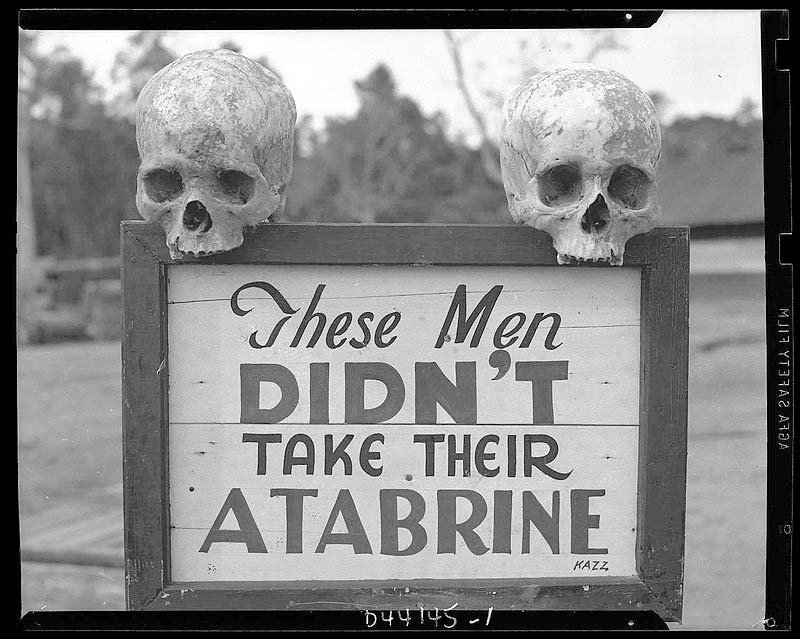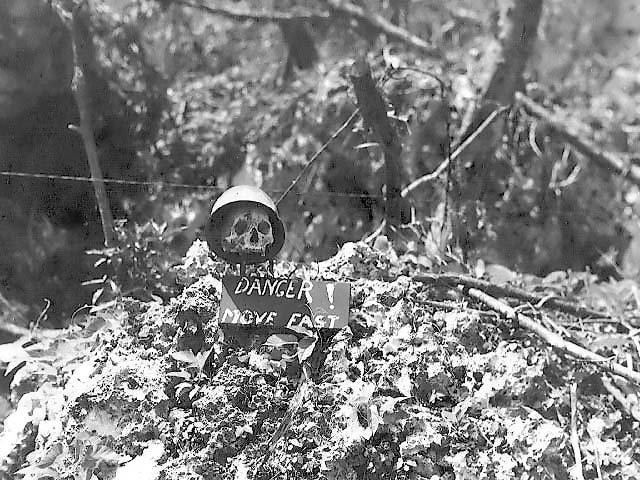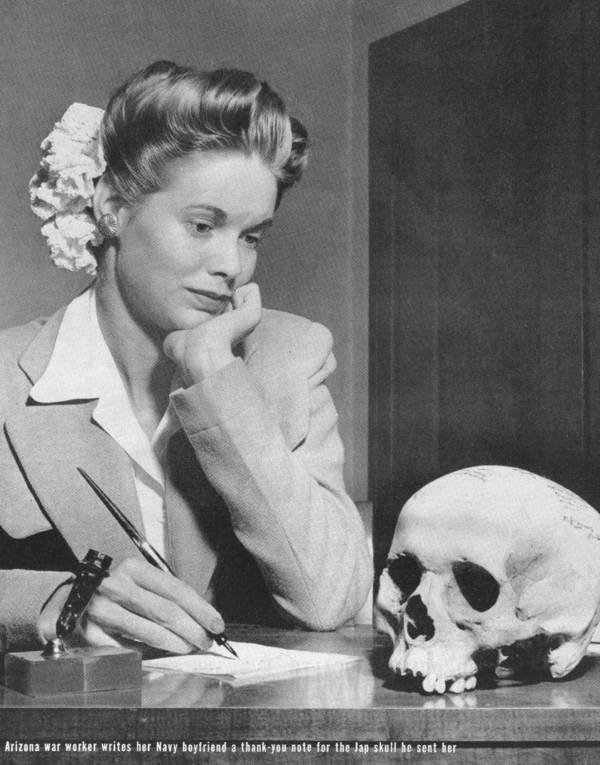The thought of a Japanese soldier’s skull becoming an American ashtray was as horrifying in Tokyo as the thought of an American prisoner used for bayonet practice was in New York.

Several years after the end of World War II, the bodies of Japanese soldiers who had died in the Mariana Islands were repatriated to their homeland for proper burial. Roughly 60 percent were missing their heads.
The heads of the dead soldiers were likely the first thing to be taken as a war trophy. This was not all, after taking the head out of the body, they will boil the head until it was left with just the clean skull.
Eugene Sledge, United States Marine relates a few instances of fellow Marines extracting gold teeth from the Japanese, in one instance an enemy soldier was still alive.
But the Japanese wasn’t dead. He had been wounded severely in the back and couldn’t move his arms; otherwise he would have resisted to his last breath. The Japanese’s mouth glowed with huge gold-crowned teeth, and his captor wanted them. He put the point of his kabar on the base of a tooth and hit the handle with the palm of his hand. Because the Japanese was kicking his feet and thrashing about, the knife point glanced off the tooth and sank deeply into the victim’s mouth. The Marine cursed him and with a slash cut his cheeks open to each ear. He put his foot on the sufferer’s lower jaw and tried again. Blood poured out of the soldier’s mouth. He made a gurgling noise and thrashed wildly. I shouted, “Put the man out of his misery.” All I got for an answer was a cussing out. Another Marine ran up, put a bullet in the enemy soldier’s brain and ended his agony. The scavenger grumbled and continued extracting his prizes undisturbed.

Some of the heads were mailed to their loved ones and some were used as macabre decoration throughout the soldier’s camps.
The journal of Charles Lindbergh, an American Aviator, had several instances of mutilations. For instance, in the entry for August 14, 1944, he notes a conversation he had with a Marine officer, who claimed that he had seen many Japanese corpses with an ear or nose cut off. In the case of the skulls, however, most were not collected from freshly killed Japanese; most came from already partially or fully skeletonized Japanese bodies. He further added that according to him the troops killed the remaining Japanese stragglers “as a sort of hobby” and often used their leg-bones to crave utilities.
Taking dead soldiers’ heads as a trophy got so out of hand that the U.S. Military had to officially prohibit it. U.S. Military ruled that taking the trophy skulls was a violation of the Geneva Convention for the treatment of the sick and wounded.
But the ruling hardly stopped the soldiers from taking heads as trophies, and the tradition continued for almost the entire duration of the war.
The idea for the taking of the trophies was in large part due to the widespread idea in America that the Japanese were less than human. American media referred to them as the “yellow man,” or the “yellow vermin.” To portray them as having less intelligence than Americans.

The most common trophy that soldiers found the most exciting was the skull. However, other body parts such as teeth, arm, bones, ears and noses were often taken as well. The trophies were later modified to be turned into other items such as jewelry or ashtrays.
Initially, the United States didn’t even plan to enter the war, but the attack on Pearl Harbor changed that, putting the United States directly in the middle of the battle. After Pearl Harbor, things took a drastic turn and the American sentiment towards the Japanese were inherently evil.
U.S. Marine veteran Donald Fall attributed the mutilation of enemy corpses to hatred and desire for vengeneance:
On the second fay of Guadalcanal, we captured a big Jap bivouac with all kinds of beer and supplies… But they also found a lot of pictures of marines that had been cut up and mutilated on Wake Island. The next thing you know there are Marines walking around with Jap ears stuck on their belts with safety pins. They issued an order reminding Marines that mutilation was a court-martial offense… You get into a nasty frame of mind in combat. You see what’s been done to you. You’d find a dead Marine that the Japs had booby-trapped. We found dead Japs that were booby-trapped. And they mutilated the dead. We began to get down to their levels.
After the war was over, the trophies were, for the most part, repatriated to the original homelands. Even 40 years after the war had ended, efforts were still in place to return the trophies to their intended resting places.
News that President Roosevelt had been given a bone letter opener by a congressman was widely reported in Japan. The Americans were portrayed as “deranged, primitive, racist, and inhuman.”

On February 1, 1943, Life magazine published a photograph showing a Japanese head that U.S. Marines had propped up below the gun turret of a tank. This resulted in angry letters of protest from people. The editors later responded that “war is unpleasant, cruel, and inhuman. And it is more dangerous to forget this than to be shocked by the reminders.”
Edwin P. Hoyt in Japan’s War: The Great Pacific Conflict argues that two U.S. media reports of Japanese skulls and bones being sent home were exploited by Japanese propaganda very effetely.
According to Hoyt, “The thought of a Japanese soldier’s skull becoming an American was as horrifying in Tokyo as the thought of an American prisoner used for bayonet practice was in New York.”
However, there is some disagreement between historians over what is a more common form of “trophy hunting” undertaken by U.S. personnel were. Some believe that ears were the most common form of a trophy that was taken, and skull and bones were less commonly collected. While some believe that skills are more common and “boiling the flesh off enemy skulls to make souvenirs was not an uncommon practice.”










